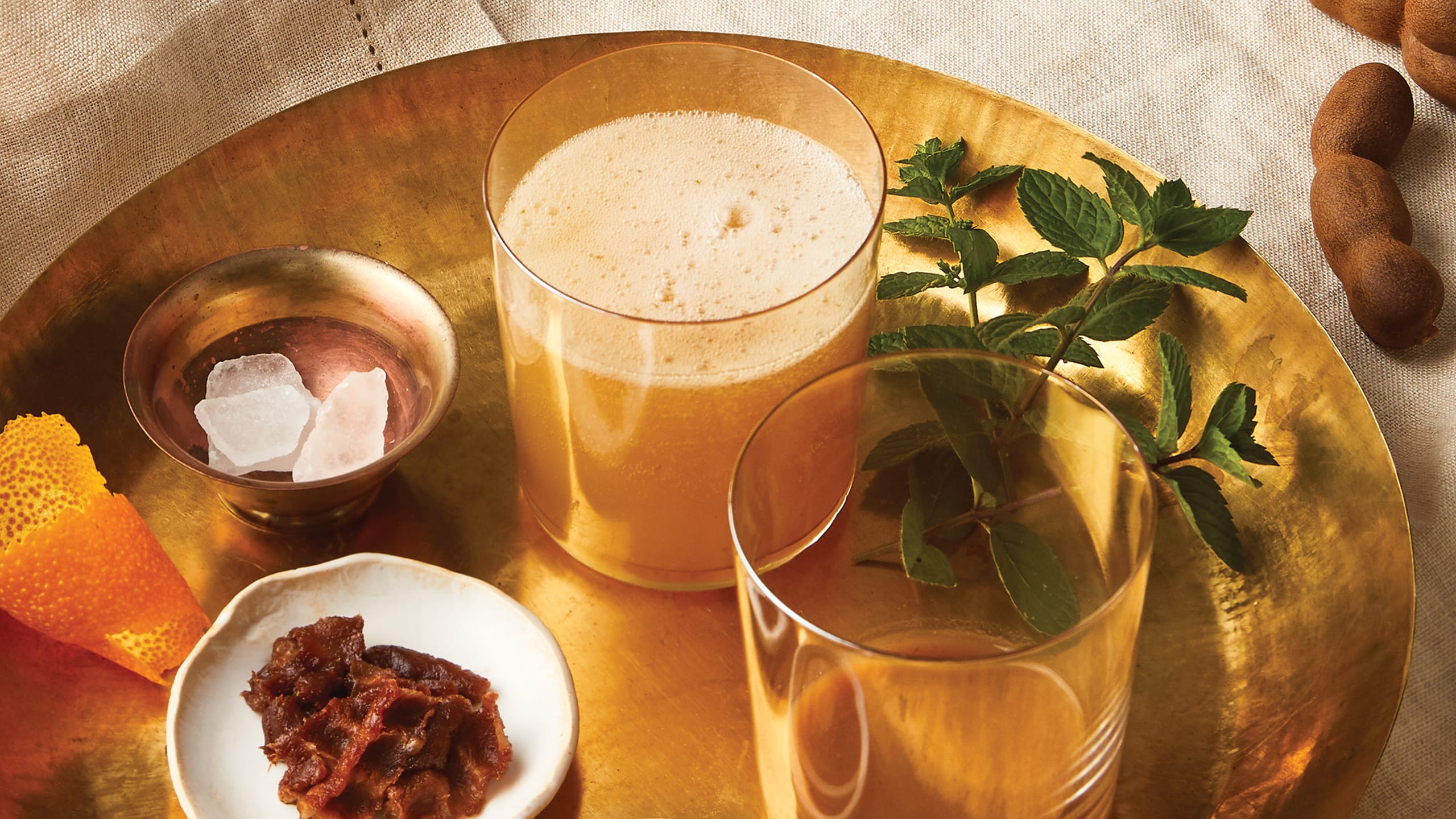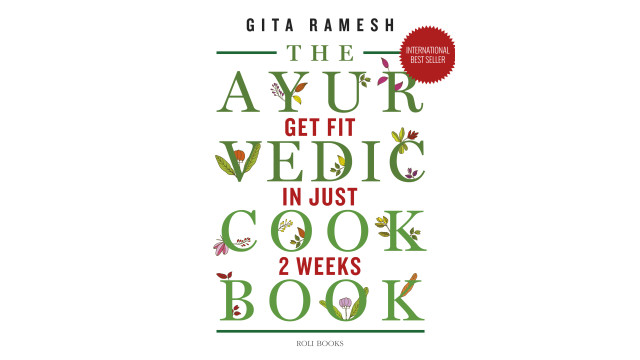Q&A with Divya Alter

From Communist-era Bulgaria to Vrindavan to California and, finally, New York City, Divya Alter’s journey to becoming a certified Ayurvedic nutritionist, educator, and restaurateur has been an unusual one. She set off on the path to spiritual and physical wellbeing early on. During high school in Plovdiv, one of Europe’s oldest cities, Alter was led by curiosity and delight into discovering yoga, the Upanishads and other Sanskrit verses, and Ayurveda.
At 18, Alter joined an underground Bhakti Yoga ashram, beginning a journey that led her across Europe and later to India. In Vrindavan, she found a guru and underwent intense studies in the Shaka Vansiya Ayurveda tradition, which is based on integrated healing at the physical, mental, and spiritual levels.
As a natural progression of her Ayurvedic studies, Alter came to the United States and continued her learning at the Barbara Brenna School of Healing. After living in Los Angeles for a while, she moved to New York with her husband. In 2009, the couple founded Bhagavat Life, a non-profit organization for Ayurvedic education in New York.
Alter offers cooking classes rooted in Ayurvedic principles and began America’s first Ayurvedic culinary training program in 2015. In 2016, observing a growing interest in Ayurveda, they opened Divya’s Kitchen, a plant-based restaurant in Manhattan’s Lower East Side. She has since introduced a line of packaged health foods, and published her best-selling first cookbook, What to Eat for How You Feel.
Alter’s second book, Joy of Balance: An Ayurvedic Guide to Cooking with Healing Ingredients is a guide to aligning the body, mind, and environment through foods choices. The recipes go beyond any particular cuisine or region. Ayurvedic pizza, anyone?
That’s Alter’s strength. She aims to demystify Ayurveda, making it accessible and adaptable to modern lifestyles.
Roundglass Food: How is Ayurveda a tool for positivity for health and healing for you?
Divya Alter: I incorporate many holistic modalities in my healing, and Ayurveda gives me the most comprehensive package of self-care practices for both preventative health and overcoming an illness. From scraping my tongue in the morning to clear bad breath and sharpen my taste buds, to rubbing sesame oil on my feet before going to bed to calm down and sleep through the night — Ayurveda has been my best friend in health for the past 25 years.
The Ayurveda lifestyle continues to expand my awareness of my body, mind, and nature around me. This awareness makes it so much easier for me to make the right choices for balancing food, exercise, living environment, etc.
RG: What’s your main nutritional concern and how do you address it through your personal journey?
DA: For several years in the past, I had an autoimmune disorder that expanded into chronic indigestion, malabsorption, and a ton of food allergies, not to speak of chronic fatigue and depression. With the help of a healing team (including an Ayurvedic doctor), I was able to completely reverse and eliminate all these conditions.
I am 50 years old now, and I’m feeling more energized and looking younger than I was 10 to 15 years ago! My main concern now is peri-menopause. To minimize the hot waves and mood swings during this hormonal transition, I’ve adjusted my diet by reducing very pungent or sour foods (chiles, too much ginger, mustard seeds, pickles, hot sauce, etc.). It’s definitely helping!
RG: What do you focus on to make the process of healing joyful?
DA: I focus on the lessons. Healing calls for a change in perspective, in habits. I ask myself with compassion, “What is my lesson here? What do I need to change now?” I also allow myself all the time I need to metabolize the healing on all levels. True healing results in personal transformation. I can’t rush through this process. I try to be patient, loving, accepting of myself, and recognize that “That’s where I want to get, and that’s where I’m at now, and that’s OK because I’m a step closer now than five years ago.”
My healing focus is more on the mind and emotional heart — on clearing negativity there. I use the body discomfort as a map to access the more subtle causes for disease. When I notice a negative energy that I’m keeping, instead of beating and hating myself for it, I rejoice, “Ah, this is what’s separating me from who I truly am and from God! Yay, I found more dirt to clean out from my psyche!”
RG: How did you make gut health and emotional wellbeing a feature in the menu of your restaurant?
DA: Because Ayurveda teaches us to eat for how we feel, or how we want to feel, I describe each dish in terms of how it will make you feel in your body or mind. I do mention the main ingredients, but I explain how the dish will make you feel in order to help you decide what menu item would be most balancing for you. For example, for our Green Cabbage and Kale Bowl, I write: “A high-nutrient, low-calorie bowl, perfect for lightening up.”
In our modern culture, we are not taught to connect how we feel with what we ate yesterday, for example. However, food has a huge impact on our health, the way we look, and how we feel. With Divya’s Kitchen, my cookbooks and masterclasses, I try to help people increase their awareness of food’s impact on their wellbeing and thus make the choices that are right for them.
RG: How does Ayurveda help to balance our emotions through food?
DA: When we cook, our energy transfers into the food and then into those who eat it. That’s why Ayurveda recommends that we cook and eat in a peaceful, positive state of mind. The food you eat will also feed the emotions with which you’re eating. For example, if you eat when you’re sad and crying, you’ll feel even more sad after your meal.
Foods carry vibrations and can produce different emotions in us. For example, rose petals or rose water can calm and cool a “burning heart.” Nutmeg can calm the mind and help you feel more centered. Onions and garlic can stimulate and charge you, especially when you need to compete or fight; they can also increase your libido.
Not just ingredients, dishes can be calming and centering (a soothing khichdi, for example), or stimulating and temper-increasing (like a hot sauce). In my new cookbook, Joy of Balance, I profile ingredients with their physiological and mental/emotional effects in order to empower the reader in deciding when to include that ingredient on their plate and when to keep it on the shelf.

RG: Ayurveda has a lot of rules about cooking, eating and lifestyle habits. What’s the best approach to go beyond that fear of rules and incorporate them in our lives?
DA: I don’t look at them as rules but rather as guidelines. If you look at the body as a car, then Ayurveda is the manual for how to use it. The instructions in it are not meant to restrict us, but to enhance and prolong our use of the body so that we can have an enjoyable ride to our destination, or goal of life. Just like a car manual tells you what its optimal fuel is, how often to change the oil, how to adjust the car seat or not overheat the engine, Ayurveda presents guidelines on how to select the best “fuel” for our body type, what cleansing procedures will keep our pipes unclogged, how to clean the body’s internals and externals, what to avoid to prevent our liver from overheating, etc.
The best way to overcome fear is to understand the “why” behind the “what.” If I just told you, “Scrape your tongue, don’t brush it!” you’ll probably rebel. But if I told you, “Scraping your tongue clears out plaque and bad bacteria, and brushing your tongue pushes them deeper in, leading to bad breath and tooth cavities,” you’ll then have the freedom to make your educated choice and experience the benefits or challenges from that choice.
Ayurveda presents a ton of guidelines. It doesn’t mean that we have to follow all of them, and all at once. Look at them as a buffet of choices and pick the ones that you feel you can easily incorporate right now. Test, adjust, and try another practice. The goal of the Ayurvedic “rules” is to bring us as close as possible to using this machine of a body according to its design and purpose. This enhances our sense of harmony with nature, of which we're all part, and reduces stress. If you’re stressing out about practicing Ayurveda, you’re doing something wrong.
RG: What is your favourite Ayurvedic ingredient?
DA: First of all, every natural ingredient could be considered “Ayurvedic,” if it supports your health at this time. One ingredient that I use every day and that I need so much that I carry with me when I travel, is my cultured ghee. It is not only one of the best fats to cook with, but it is so nourishing and delicious. It moisturizes my body on the inside. Cultured ghee helped me overcome leaky gut in the past, and now it makes menopausal changes almost unnoticeable. It also increases longevity, which I’m thinking about a lot at my age.
RG: Do you use any heritage cookware intrinsic to Ayurveda? How is it linked to wellbeing?
DA: I use some of the traditional clay pots of India. My teacher, Vaidya R. K. Mishra told me that the unglazed, lead-free earthenware that I have is the same kind that his mother used when he was growing up in his traditionally Ayurvedic village in Bihar, India. Clay is a porous material that is also 100 percent natural and biodegradable; it allows for moisture and energy to circulate well while cooking. Everything cooked in a clay pot tastes better, and the food feels so vibrant when I eat it.
I also use a hand stone grinder, called “silbatta” in some parts of India. It’s a 50-pound large tabletop stone with a 15-pound rolling pin that has been used for centuries to grind spices, herbs, grains, and lentils. A stone grinder allows ingredients to be powdered or pureed without overheating them and diminishing their volatile organic compounds. It’s also a great workout prop!
I also have a wooden butter churner. I use it to beat cultured cream into fresh butter, which I then cook into cultured ghee. This is another fantastic workout kitchen equipment. You see, when you process ingredients by hand rather than a machine, the prana (life energy) in the food is preserved, so this ingredient will carry a higher vibrational charge into your body and mind. It’s a subtle perception, but such vibrationally charged foods increase the intelligence of our body to heal itself and resist disease.
RG: Can you describe your kitchen meditation?
DA: I consider my kitchen a sacred space and try to keep it as such: clean, organized, efficient, inspiring. It is a place for me to prepare meals that will deeply nourish and invigorate whoever I cook for. To me, cooking is a selfless service, an expression of love and gratitude. I try to keep my mind calm and positive. Unless I’m teaching, I prefer to remain silent while cooking and focus or meditate on what I’m doing, engaging my intuition in the process. I love listening to chants or uplifting audiobooks. I’m not perfect — there are times when I’m rushing to get things done or get angry while cooking. But the sacredness and meditative mindset is something I strive for.
RG: Do you have any mealtime rituals?
DA: I like to add spirituality to my cooking and express gratitude to God and everyone else who contributed to the meal. I do that by saying a few prayers in Sanskrit and some spontaneous prayers as well. Food is a precious gift from God, from nature. There are also so many people who work hard to make it easy for us to access nourishing ingredients. I don’t take that for granted. To me, bringing awareness to where our food comes from and expressing gratitude is the perfect completion of cooking.
READ | Joy of Balance: An Ayurvedic Guide to Cooking with Healing Ingredients
Key Takeaways
- Alter on self-care practices through food.
- Ayurveda heals the gut, balances emotions with food.
- Mindful eating is meditative.





